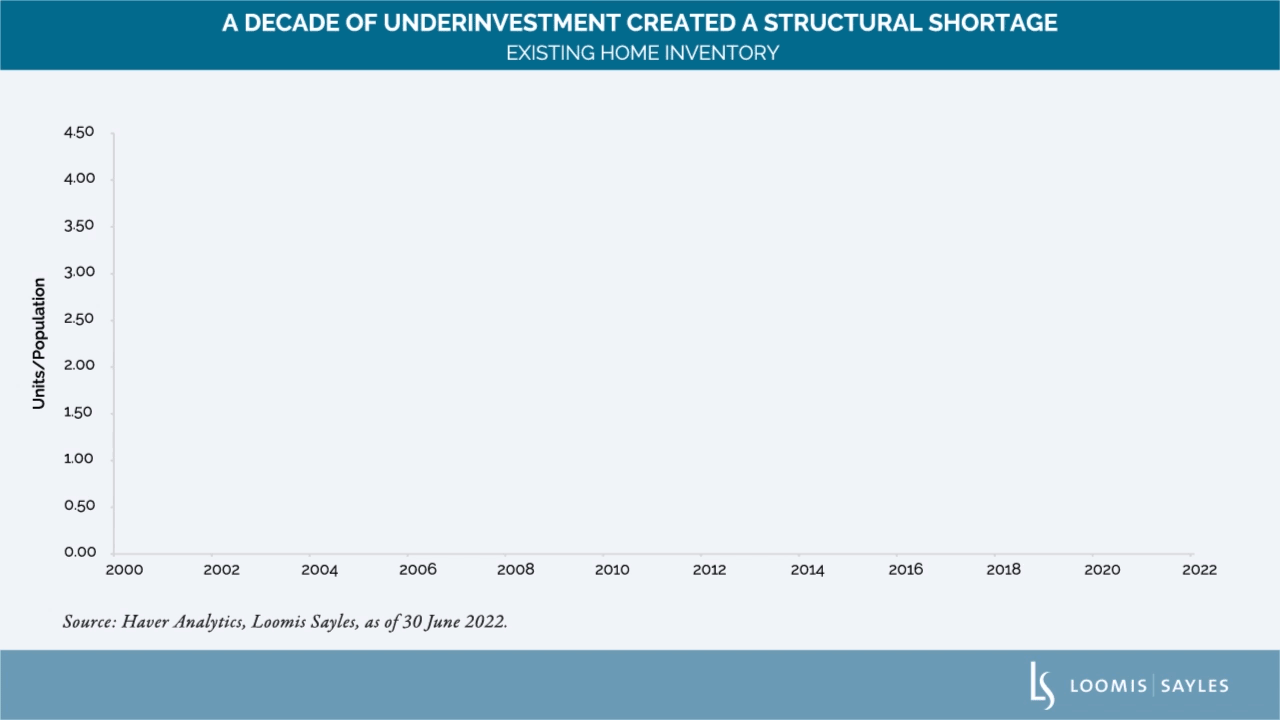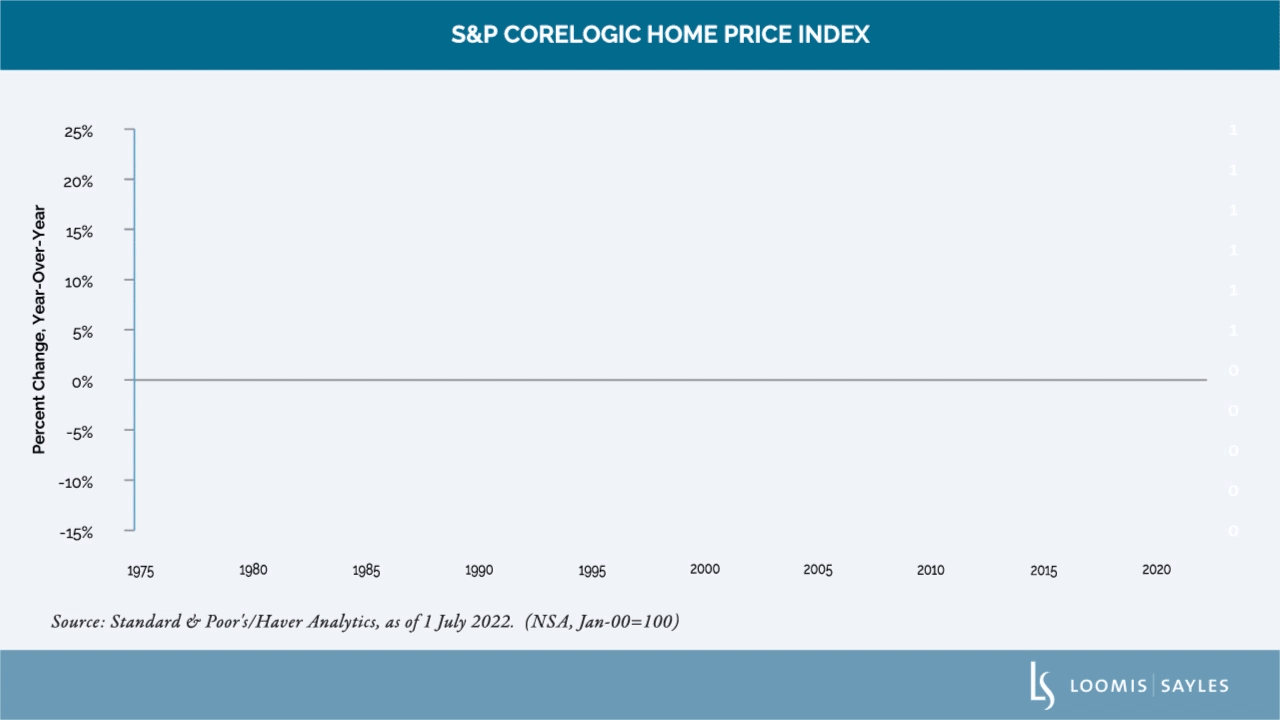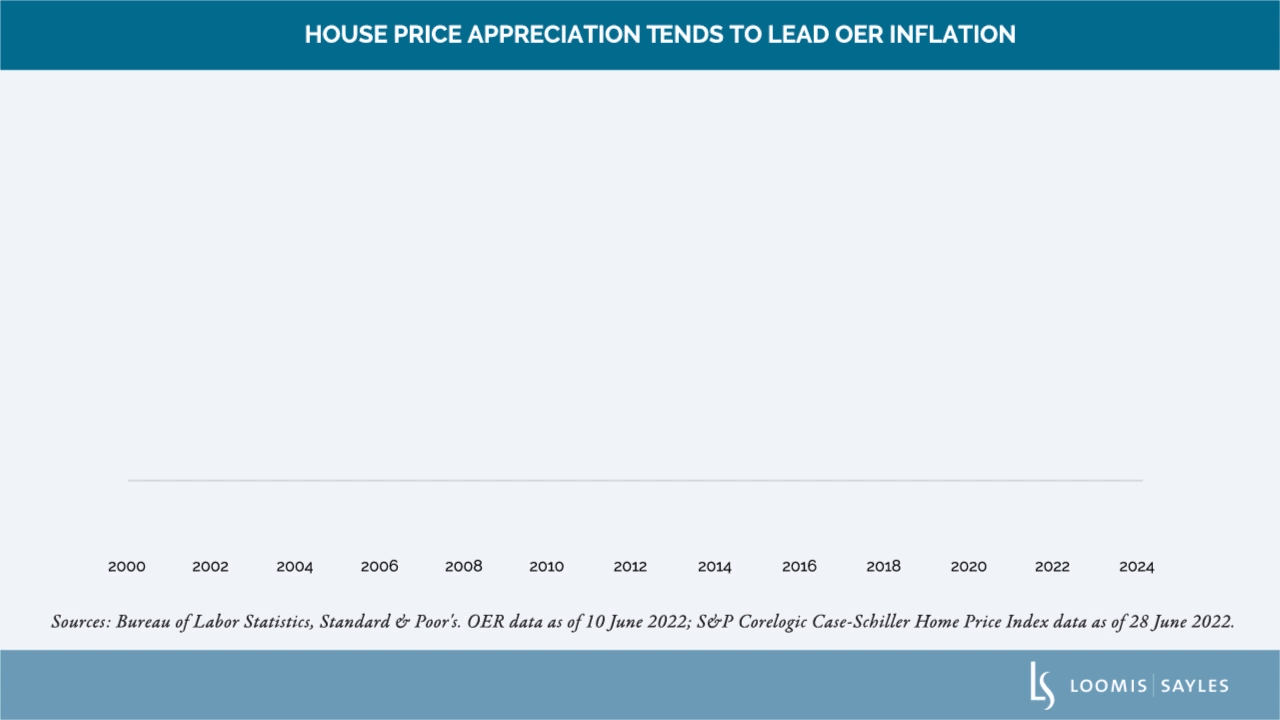Escalating inflation and tighter monetary policy appear to have shaken investors’ confidence in the housing sector. For many, a big question looms large: how solid is the housing sector? We recently gathered our macro, credit and securitized analysts to dive into this question. In short, we think the sector should hold steady with good structural trends, potentially a bad environment if you are looking for housing bargains and a scenario for surprisingly prolonged consumer price inflation. Here are our takeaways.
Good structural trends
We believe high house price inflation and higher interest rates will likely restrain home sales, and therefore be a headwind to GDP growth. However, consider the long-term structural housing trends that have shaped the sector to date. These include demographic shifts and chronic underinvestment in housing since the global financial crisis (GFC). We think both should support sector fundamentals and limit the sector’s downside.

House price appreciation – potentially bad for bargains
The increase in the absolute level of mortgage rates should slow the rate of home price appreciation dramatically, but we believe the low level of supply reduces the odds of large price depreciation.

Historically, year-over-year home price depreciation has been rare. When it did occur, it was during a recession. Outside of a recession, we have seen home price inflation moderate but not go negative. Given the housing market fundamentals we just discussed, we do not think year-over-year price depreciation is likely over the next 12 months.

OER may present a sticky problem
What we do foresee in the housing sector is another ingredient for “sticky” inflation—a factor the Fed might have to deal with into 2024. It is the lagged relationship between home price inflation and shelter cost inflation in the CPI.
Whether you own or rent, housing is the largest expenditure for the typical household, and therefore holds a significant weight in consumer inflation indices (e.g., Headline and Core CPI, Headline and Core PCE).
House price appreciation tends to be tightly correlated with owner’s equivalent rent (OER), which is a CPI component with a 30% weight.[1] House price inflation has a lagged effect on the OER and so it has a lagged effect on the CPI because rental contracts are typically signed for one year and are slow to react in comparison to the real-time housing market. Therefore, any significant appreciation in house prices implies high OER inflation in the near future.
Prolonged inflation could be a surprise
Some investors may be surprised that the Fed will be fighting inflation for a year or more. Consider that the significant increase in house prices that we have experienced until now will likely apply upward pressure on inflation via OER over the next 12 months. Beyond that, we have trouble seeing a catalyst that would substantially reduce the pressure on OER. We believe moderation in home price affordability will be long tailed, and any significant downward pressures on home prices would only manifest itself in a broader downturn. We believe the Fed will have to contend with elevated inflation for at least one more year, and perhaps longer if home price appreciation remains above its historical average (4.4%.)[2]


[1] OER is the monthly rent that would be equivalent to the monthly expenses of owning a property (e.g. mortgage, taxes, etc.). The Bureau of Labor Statistics reported OER was 30% of the CPI as of 10, June 2022.
[2] Source: Standard & Poor’s, as of 28 June 2022.
WRITTEN BY:


WITH CONTRIBUTIONS FROM:
David Lapierre, Senior Credit Research Analyst
Stephen LaPlante, Portfolio Manager, Mortgage & Structured Finance
Stephen L’Heureux, Portfolio Manager, Mortgage & Structured Finance
Shannon O’Mara, Associate Director of Credit Research
MALR029248










